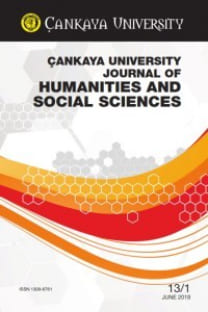The Scarlet Letter: Nature vs. Nurture
Hawthorne, The Scarlet Letter, nature, nurture
The Scarlet Letter: Nature vs. Nurture
___
- Alpen, James L., “Yeat’s Bird-Soul Symbolism,” Twentieth Century Literature, 6/3 (October 1960), pp.117-22. Alpers, Paul, “What is Pastoral?,” Critical Inquiry, 8/3 (Spring 1982), pp.437-60. Banfield, Ann, “The Moral Landscape of Mansfield Park,” Ninteenth-Century Fiction, 26/1 (June 1971), pp.1-24. Bercovitch, Sacvan, The Office of The Scarlet Letter (Maryland: John Hopkins University Press, 1992) Blair, Sara, “Cultural Geography and the Place of the Literary,” American Literary History, 10/3 (Autumn 1998), pp.544-67. Bradford, William, Of Plymouth Plantation, Book I, Ch. 9 (written 1630-50; first published 1856; reprinted in Sculley Bradley et al., eds., The American Tradition in Literature, Vol. I, 3rd edition; New York: Norton, 1967). Briggs, K. M., “The English Fairie,” Folkore, 68/1 (March 1957), pp.270-87. Byerly, Alison, “The Uses of Landscape: The Picturesque Aesthetic and The National Park System,” N. pag. Rpt. in The Ecocristicism Reader: Landmarks In Literary Ecology. Ed. Cheryll Glotfelty and Harold Fromm. (Athens: The University of Georgia, 1996) Campbell, Joseph, Power of Myth (New York: Anchor Books, 1991) Cohen, H. Hirsch, “David and Batsheba,” Journal of Bible and Religion, 33/2 (April 1965), pp.142-48. Colacurcio, Michael J., “Footsteps of Ann Hutchinson: The Context of The Scarlet Letter,” ELH, 39/3 (1972), pp.459-94. Culter, Hugh C. and Thomas W. Whitaker, “History and Distribution of The Cultivated Cucurbits In The Americas,” American Antiquity, 26/4 (1961), pp.469-85. Foster, Charles H., “Hawthorne’s Literary Theory,” PMLA, 57/1 (1942),pp.241-54. Godwin, David, Godwin’s Cabalistic Encyclopedia A Complete Guide To Cabalistic Magick (St. Paul: Llewellyn Publications) 1994. Hawthorne, Nathaniel, The Scarlet Letter (Signet Classics) (New York: Signet Classics, 1999) Levack, Brian, Gender and Witchcraft (New Perspectives on Witchcraft, Magic, and Demonology, Volume 4). (New York: Routledge, 2001) McNamara, Anne Marie, “The Character of Flame: The Function of Pearl in The Scarlet Letter,” American Literature, 27/4 (January 1956), pp.537-53. Murray, W. A., “What Was the Soul of the Apple?,” Review of English Studies, 10/38 (May 1959), pp.141-55. Ryan, J. S., “German Mythology Applied: The Extension of the Literary Folk Memory.” Folklore, 77/1 (Spring 1966), pp.45-59. Ryken, Leland, Worldly Saints (Grand Rapids: Zondervan, 1990) Ryskamp, Charles, “The New England Sources of The Scarlet Letter,” American Literature, 31/3 (1959), pp.257-72. Shreve, Gregory M., “Nature and Language: A Semiotic Study of Cucurbits in Literature.” Rev. of Book. American Anthropologist March 1983: 200. Print. Standen, Edith A., “The Tapestries,” The Metropolitan Museum of Art Bulletin, 18/3 (November 1959), pp.96-111. Stubbs, John C., “The Scarlet Letter”: The Theory of Romance,” PMLA 83/5 (October 1968), pp.1439-447. Turner, Frederick, “The Art of Nature,” Lapham’s Quarterly (November 2015), http://www.laphamsquarterly. org/book-nature/art-nature. Zimbardo, Philip, The Lucifer Effect Understanding How Good People Turn Evil (New York: Random House Trade Paperbacks, 2008).
- ISSN: 1309-6761
- Yayın Aralığı: Yılda 2 Sayı
- Başlangıç: 2004
- Yayıncı: Çankaya Üniversitesi
İngiliz Neo Gotik Mimarlığının Doğuşu ve Gotik Yazınla İlişkisi
‘Writing Dangerously’: Tributes and Reflections in an Age of Terror
“To Build a Fire”: An Ecocritical Reading
Neeraj SANKHYAN, Suman SİGROHA
On the Teachability of Pausing Strategies in Foreign Language Learning
Bilal GENÇ, Mehmet KILIÇ, Erdoğan BADA
Terrorism in Conrad’s The Secret Agent*
